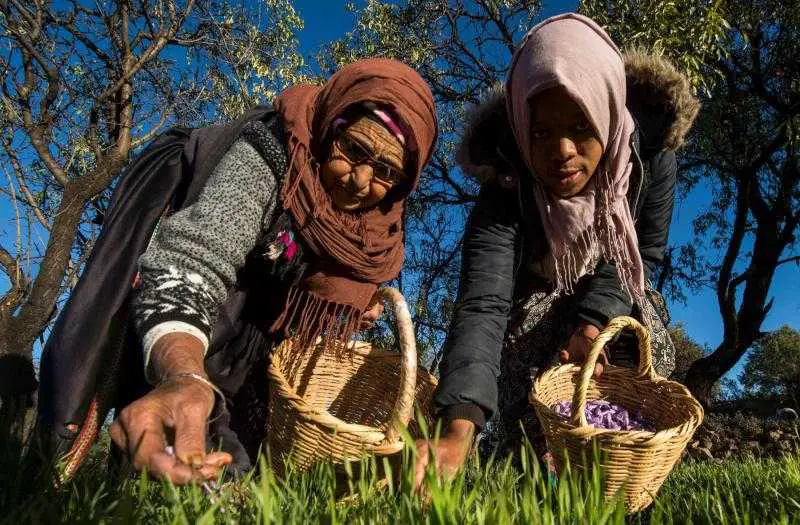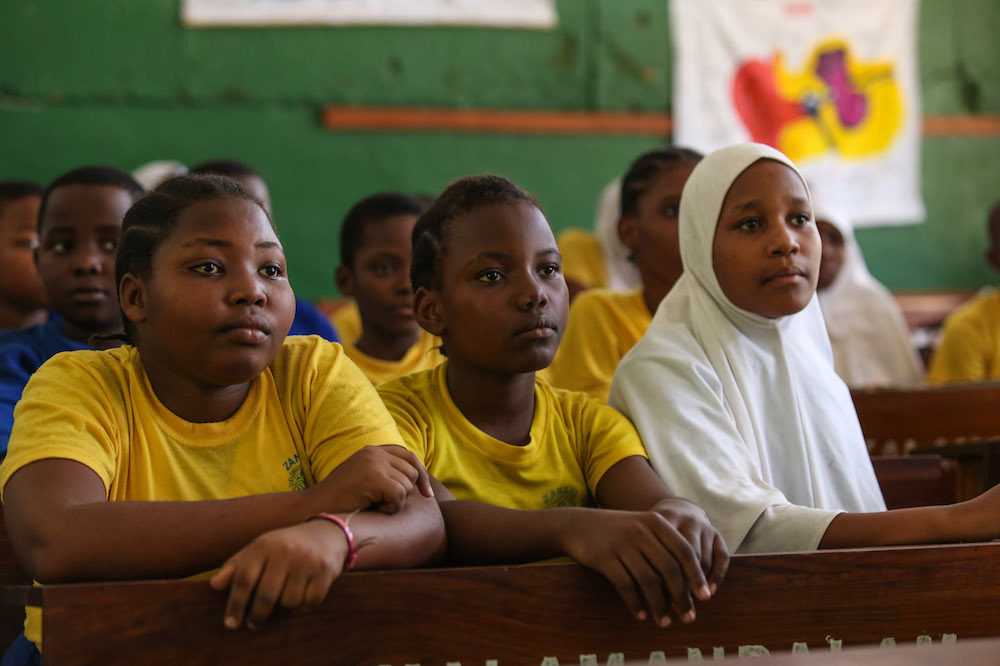- How transition finance can catalyse Africa’s green industrial revolution
- Stanbic PMI Report: Mixed performance as Kenya’s agriculture, construction offset manufacturing decline
- Uganda’s land management gets a tech makeover to boost transparency
- Nigeria’s output dips fastest in 19 months on a sharp rise in costs
- Apple faces growing backlash over Congo exploitation
- Why East Africa is staring at higher wheat prices in 2025
- Nairobi Gate SEZ pumps $7 million into Kenya’s agro-processing industry
- What impact will the US election have on Africa?
Browsing: World Bank
The Moroccan planning agency revealed on Wednesday that, the country’s unemployment rate slipped to 9.2 per cent in 2019 from 9.5 per cent in 2018. This was attributed by the offset labor gains in town and cities, after heavy job losses within the rural areas, Reuters revealed.
Morocco which is now run under a new coalition-government, its economy was spotted by World Bank (in October 2019) to be slowing down below its potential constrained by a volatile, rain-fed, agricultural sector and slow growth in the tertiary sector.
According to World Bank, real GDP slowed to 2.7 per cent in 2019, while non-agricultural growth improved by 3.4 per cent (compared to 3 per cent in 2018), driven by the better performance of phosphates, chemicals, and textiles.
READ U.S.-Africa Business Summit 2020 to be hosted in Morocco
In addition, the government is currently working to develop a new model of economic development …
Tanzania and World Bank have been close development partners for more than 54 years, and throughout the years—Tanzania has benefited from several funds that tap into the core of transforming the development landscape in one of the largest economies in East Africa.
According to World Bank, in the last 50 years, the cooperation between the Bank Group and the Government has grown in financing, grants, policy advice, and research; covering various areas from macroeconomic management to projects in transport, energy, education, health, and other key sectors for both Tanzania Mainland and Zanzibar’s development.
Recently the government of Tanzania has experienced a hard-time securing a $500 million education loan from World Bank, scheduled to revitalize the crucial sector in Tanzania.
The loan could be largest financial assistance provided to Tanzania within the past three years aimed at the education sector.
And yet—the loan has been delayed, in the wake of human …
Leading mobile payments company WorldRemit saw a 43% growth in remittances to Africa from higher-income nations in 2019.
The top five countries receiving remittances from the diaspora in 2019 included Ghana, Kenya, Uganda, Zimbabwe, with Nigeria receiving the most remittances. The top sending countries to the region included the United States, Australia, Canada, and Sweden, with the UK sending the most remittances.
The diaspora plays a key role in Africa’s development story, today the value of remittances is three times larger than official development assistance (ODA) and forecasted to become higher than foreign direct investment for a handful of African countries in 2019.
WorldRemit has disrupted an industry previously dominated by offline legacy players by taking international money transfers online – making them safer, faster and lower-cost. We currently send from 50 to 150 countries, operate in 6,500 money transfer corridors worldwide and employ over 800 people worldwide.
On the …
Zambia’s economy is expected to grow by 3 per cent, according to nation’s President Edgar Lungu who said on Thursday that, the nation’s economic growth will be slightly off the previous forecast of 3.2 per cent.
According to Reuters, President Lungu revealed the growth projection when he was meeting diplomats, and commented on the fiscal deficit which was expected to shrink from 6.5 per cent in 2019 to 5.5 per cent in 2020, while inflation would remain within the range of 6 to 8 per cent.
However, in October 2019, Bloomberg reported that Zambia’s inflation rate remained at a three year high in October and economic growth slowed, complicating the central bank’s task.
Further, annual consumer inflation accelerated to 10.7 per cent from 10.5 per cent in September 2019, whereby Zambia Statistics Agency noted to be the fastest rate of price growth since October 2016.
The economy of Africa’s second-biggest …
The giant hydropower dam on the Blue Nile (Grand Ethiopian Renaissance Dam-GERD) agreement is set to be finalized later this month in Washington-USA by ministers from Egypt, Ethiopia, and Sudan, who came to an agreement on Wednesday, Reuters reveals.
The hydropower project caused a rather serious diplomatic crisis between Cairo (of which relies on the river for its freshwater supply) and Addis Ababa.
According to Reuters, the ministers agreed to fill the $4 billion project in stages during the wet season, taking into account the impact on downstream reservoirs, the U.S. Treasury Department, which hosted the meeting, said in a joint statement with the countries and the World Bank.
Further, the statement highlighted that the initial filling of the dam set to commence in July will aim for a level of 595 meters above sea level and early electricity generation while providing appropriate mitigation measures for Egypt and Sudan during …
The fourteenth edition of the 2019 African Economic Conference (AEC) has commenced in Sharm El Sheikh—Egypt, raising serious ideas towards sending a crucial call to African policymakers to gain a rather strong hold in addressing unemployment among youth in Africa.
According to a statement from African Development Bank (AfDB), African governments are expected to eradicate setbacks and high startup costs that African youth face, in order to create decent well-paying jobs.
The AEC is jointly organized every year by the African Development Bank, the Economic Commission for Africa and the United Nations Development Programme (UNDP) to discuss pertinent issues affecting the continent.
This year’s event is running on the theme: “Jobs, entrepreneurship, and capacity development for African youth”.
Egypt’s Minister of Investment and International Cooperation, Sahar Nasr, gave out a rather vital aspect on the matter during his opening plenary, highlighting that, the conference provided a critical platform to …
a section of African countries unveiled the African Continental Free Trade Agreement (AfCFTA) in March last year.
The agreement, which came into force in May 2019, can revitalize the African economic landscape over time and space, especially with the existing in many African countries.
The AfCTA comprises of 55 countries (with a combination of $2.5 trillion GDP) in Africa to a unified-single market. Despite African countries’ economies variation, still the free trade agreement comes at a greater moment when various regions in the continent, including Southern African Development Community (SADC ) and East Africa Community (EAC) are working to harmonize their economic affairs to boost trade, security, and industrialization.
The current economic and trading landscape
According to the African Development Bank’s (AfDB) African Outlook report of 2019, it showed the continents overall economic performance is gaining decent improvement, as as the GDP reached at an estimate of 3.5 per cent …
The Global Gender Summit which kicked off on November 25 in Kigali-Rwanda, and first summit of-its-kind to be held in Africa, emerged with rather vital issues in the second-day, whereby top-notch financial leaders rallied their desire to see support to women business across the African business landscape.
The summit is running on a theme “Unpacking constraints to gender equality” has drawn in presidents, high government officials, multilateral development banks, private sector, civil society and top business and finance leaders from across the continent, who have mainstreamed their ideas on how gender issues influence African finance.
READ:Promoting women will boost African economic growth, World Bank says
According to the African Development Bank (AfDB) press release, Dr. Jennifer Blanke the bank’s Vice President for Agriculture, Human and Social Development, aligned her ideas along side other Leaders from multilateral development banks, financial institutions and the private sector called on peers to dispel …
Women mean business in Africa, and available data shows that they tend to execute business operations or manage, compared to their male counterparts, thus—supporting women business with credit, business skills, and conducive operating environment might be the break that Africa has been eyeing.
According to the World Bank Report (Profit from Parity, Unlocking the potential of women business in Africa-2019), there are three factors that are found to limit women potentials in the business sphere, which are social norms, legal discrimination and the risk of gender-based violence ( for instance, the report shows, 14 per cent of women entrepreneurs in Malawi have been subjected to physical or emotional violence from their male counterparts).
All three factors are also buried under various segments such as endowment, which carry: education/skills, confidence or risks, finance and assets, networks and information. Another segment, that is an underlying constraint is the household level environment, which …
IFC and IFHA-II Coöperatief U.A., a private equity fund focused on health care in Sub-Saharan Africa, have launched a $115 million holding company to acquire and integrate targeted health care service businesses in East and Southern Africa.
The project will boost access to quality health care services to help improve lives and achieve universal health coverage across the region. IFC is investing $22 million in the Hospital Holdings Investment (HHI) holding company, an investment platform set up by IFHA-II, which is also supported by the European development finance organizations Swedfund, Proparco, Finnfund and IFU, Danish Investment Fund for Developing countries. HHI will be IFC’s largest equity investment in health care in Sub-Saharan Africa, outside of South Africa. IFC also mobilized $43.2 million from other investors.
“HHI is filling a critical gap in the health care sector by providing secondary and out-of-hospital care for middle to lower middle income patients in …








